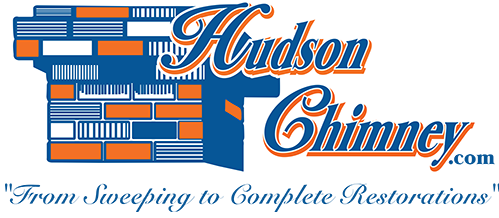by Mark Hudson | Jan 23, 2018 | Dryer Vent Cleaning
Even if your Christmas list didn’t include home maintenance, there is time to start on the right foot. You can save money this year, and improve your household safety, when you start the year off with a clean dryer vent.
Why Clean the Dryer Vent?
- Prevent Fires
There are 2,900 home clothes dryer fires reported each year, causing around 5 deaths, 100 injuries, and $35 million in property loss. In fact, failing to clean the clothes dryer is the leading cause of home clothes dryer fires. These fires happen more in January than any other month, and when they happen during the night, the family is less likely to escape unscathed. The best way to prevent devastating fires is to keep the dryer vent clean.
- Raise Efficiency
The average homeowner doesn’t realize that a clothes dryer is designed to last 10 years, and designed to dry a load in ONE CYCLE. If your dryer takes more than one cycle to dry a normal-sized unit, there is a problem with the appliance. The most common problem is a dirty/clogged dryer vent. Not only is it a fire hazard, but it wastes electricity and shortens the life of the appliance!
- Save Money
If your dryer takes 2 or 3 cycles to completely dry a load of clothes, your dryer will only last 3-5 years when it should last ten. It will use 2-3 times more electricity and will cause other issues with your home year-round.
- Damage to Home Interior
When the dryer vent is clogged and efficiency drops, heat and moisture can push into your house. Many homeowners assume it is normal for your dryer to produce heat, and it does—but it should escape by way of the vent! There is a problem with the dryer vent if your dryer feels hot to the touch, heats the room where it’s installed, or causes condensation in the home. Condensation and heat inside your house can cause wallpaper and paint to buckle.
Call a Professional Today
Most homeowners buy a large appliance like a clothes dryer and has it delivered. This is not a professional installation and does not mean it’s ready to use. Only a professional knows there are the manufacturer and local codes that affect the way your dryer is installed. In some cases, these specifications will determine whether or not your appliance is covered by its warranty.
- The dryer duct should be 4 inches or more
- The dryer vent should be less than 25 feet
- Dryer vents should be independent systems and terminate outside
- The dryer vent termination hood should prevent backdrafts
- Metal transition ducts should be used between the dryer and the exhaust duct
- Flexible transition ducts are not safe for use in attics, crawlspaces, or inside walls
These safety standards are for safety and efficiency. Taking care of your dryer vent now, starts the year off right. Make sure your family is safe from a dryer vent fire, and save money in 2018.
Contact Us
Call Hudson Chimney at 904-282-4159, and ask an expert about dryer vent services today.
by Mark Hudson | Mar 9, 2016 | dryer vents, fire safety
Have you been noticing lately that it is taking longer for your clothes dryer to completely dry one load of clothes? If so, this is a sure sign that your dryer vent is dirty and clogged and needs professional cleaning. When the vent is clogged, hot, moist air is trapped in your clothes dryer which makes it difficult for the clothes to dry in one cycle. Not only does a clogged dryer vent make it harder for your dryer to work correctly, it can also be a dangerous fire hazard. Hudson Chimney is proud to offer professional dryer vent cleaning services, along with our chimney and fireplace maintenance, repair, and installation services. When you think about it, your dryer vent is not unlike your chimney as it is used to remove exhaust from your home, which is why we have included this service. Many national fire safety organizations like the Chimney Safety Institute of America (CSIA) and the National Fire Protection Association (NFPA) recommend that you should have your dryer vent professionally cleaned every year to keep it from getting clogged. We would like to tell you more about why it is so important to have this service done.

Our professional dryer vent cleaning service will reduce your risk of experiencing a clothes dryer fire.
Your clothes dryer produces a lot of lint, which is so flammable that the Boy Scouts of America recommend that you use it to start campfires. When lint accumulates in your dryer vent, it increases your risk of your clothes dryer catching on fire. You may be surprised at exactly how common clothes dryer fires are. According to the CSIA, the U.S. Consumer Product Safety Commission reported that 5,100 fires caused by dirty clothes dryer vents occurred in 2012. These fires resulted in 10 deaths, 180 injuries, and about $80 million in property damage. These fires and their casualties could have easily been prevented if the homeowners had scheduled a professional dryer vent cleaning. At Hudson Chimney, safety is our top priority, and we work hard to reduce as many fire hazards as we can from your home. Our professional dryer vent cleaning services is just one way we can prevent an accidental fire at your home.
Our professional dryer vent cleaning service will prolong the life of your clothes dryer.
When your dryer vent is clogged, your clothes dryer has to work harder to dry a load of clothes. This not only wastes money on your utility bills as well as energy, but it can also cause parts of your clothes dryer to wear out prematurely. The heating element is one of these parts, and it can be expensive to repair or replace this part. After Hudson Chimney cleans your dryer vent, we guarantee that your clothes dryer will work more efficiently and take less time to dry one load of clothes. You will also notice a reduction in your utility bills because you will not have to run your dryer twice to dry one load of clothes.
If you have noticed your clothes taking longer to dry, contact us at Hudson Chimney. We will be happy to schedule an appointment to professionally clean your dryer vent system.
by Mark Hudson | Apr 8, 2014 | chimney maintenance, fire safety
Let’s Talk Creosote Removal
Have you noticed any black particles and burnt-like marks on your chimney walls? You might think it’s just stained because of the smoke, however these should not be underestimated, because creosote buildup can become quite dangerous.

Don’t forget to have your chimney cleaned and inspected at least once a year to maximize output and safety.
What is that black substance coating your chimney walls? It’s called creosote, a chemical byproduct of open combustion from burning either hardwood or softwood. These two types of wood usually need to be seasoned and dried up to at least six months so that only minimal production of creosote is made. This means that creosote production is inevitable and the biggest dilemma once creosote has built up in your chimney is the probability of chimney fires occurring.
So because we can’t prevent it from forming, the next best thing is to make sure that it is regularly removed. When you talk about creosote buildup, there are three levels. Thankfully our CSIA-licensed chimney sweeps here at Hudson Chimney are ready to take full control and assess, clean and remove creosote.
Level I
The first stage is usually called soot. It’s still flaky and dusty like ash only that it’s found in the chimney walls. It is the slightest form with maybe a layer or two and can easily be removed by a chimney brush. We usually just brush it off. The process takes very little time but before the removal process is done, we first inspect and do a little cleaning.
Level II
The second stage of creosote already has tar-like features. It is now harder to remove and we usually need to use stiffers or special kinds of brushes. By now, the layers are getting thicker. Removing it will take more time than usual. During this level, creosote is building up to be more flammable and more dangerous. Nonetheless, it can still be removed.
Level III
The last and final stage is the most difficult to remove and the most dangerous. It is no longer called creosote but it is now called glaze. It is thick, totally black and is like candle wax; a hard, glossy, dark mass. By now, the chance of chimney fires occurring is greater.
To prevent this, constant cleaning and removing of creosote is the ultimate key. Once creosote starts to build up, contact Hudson Chimney so that we can monitor and lessen the problem. Give us a call and we’ll tell you more!


